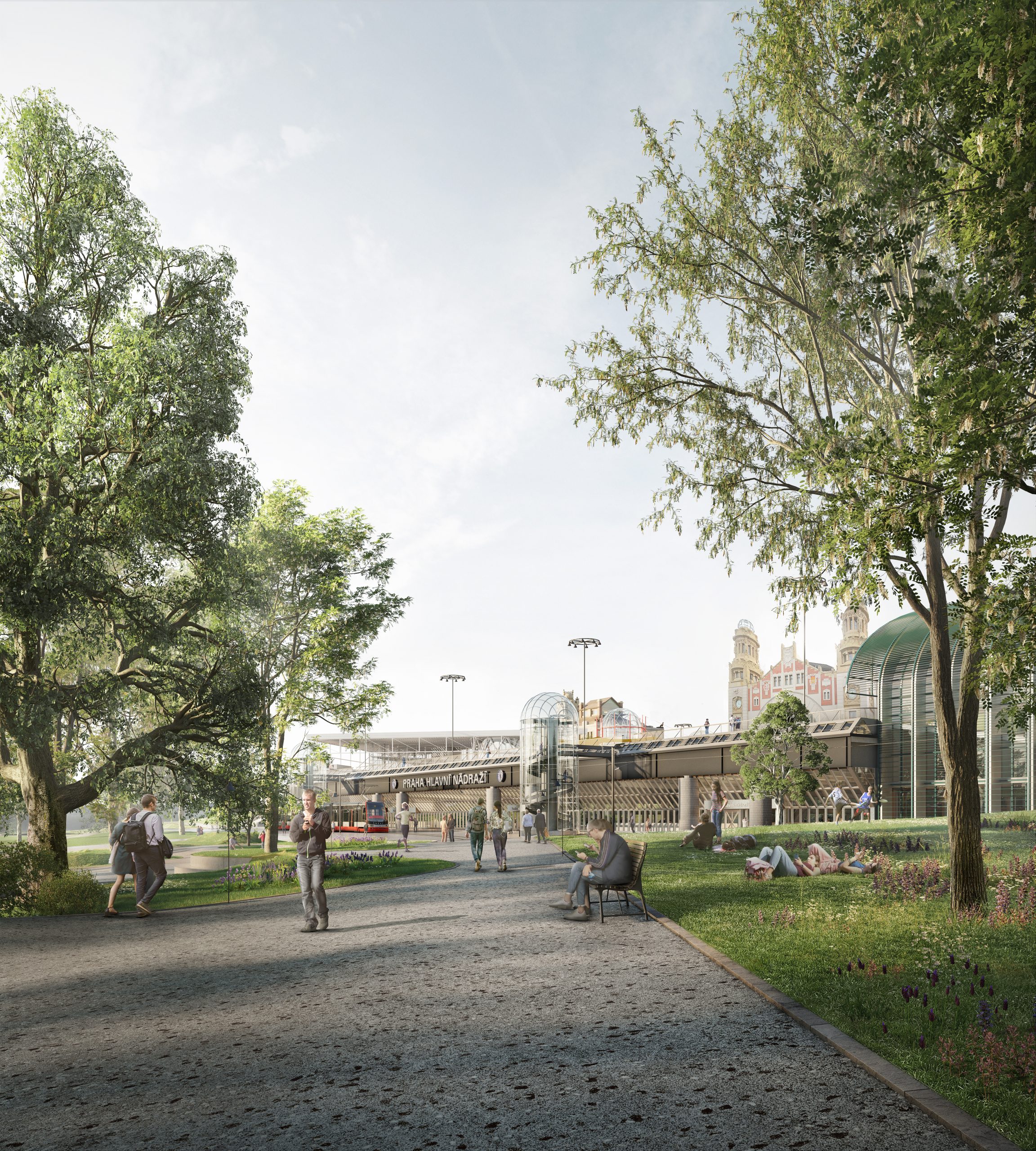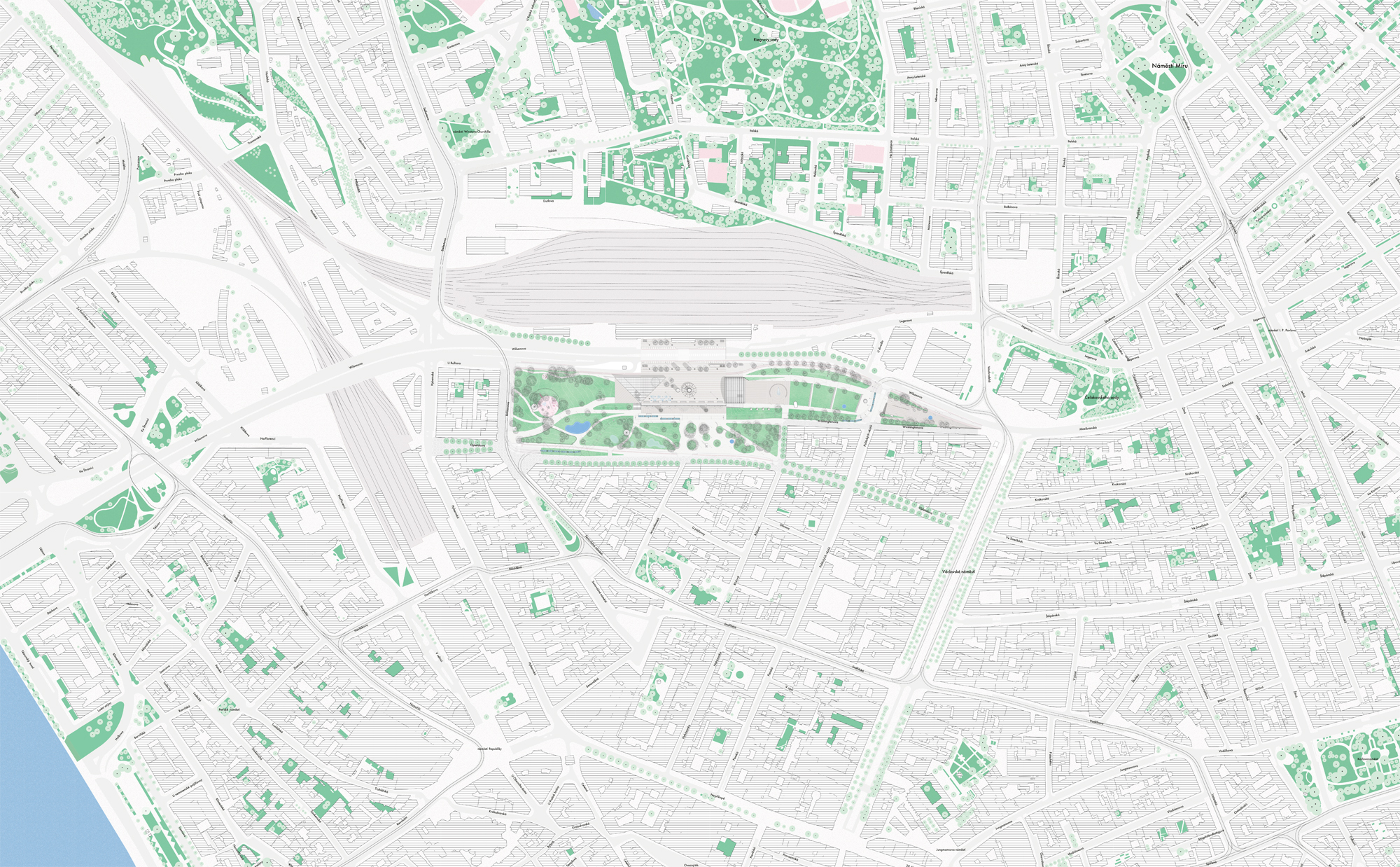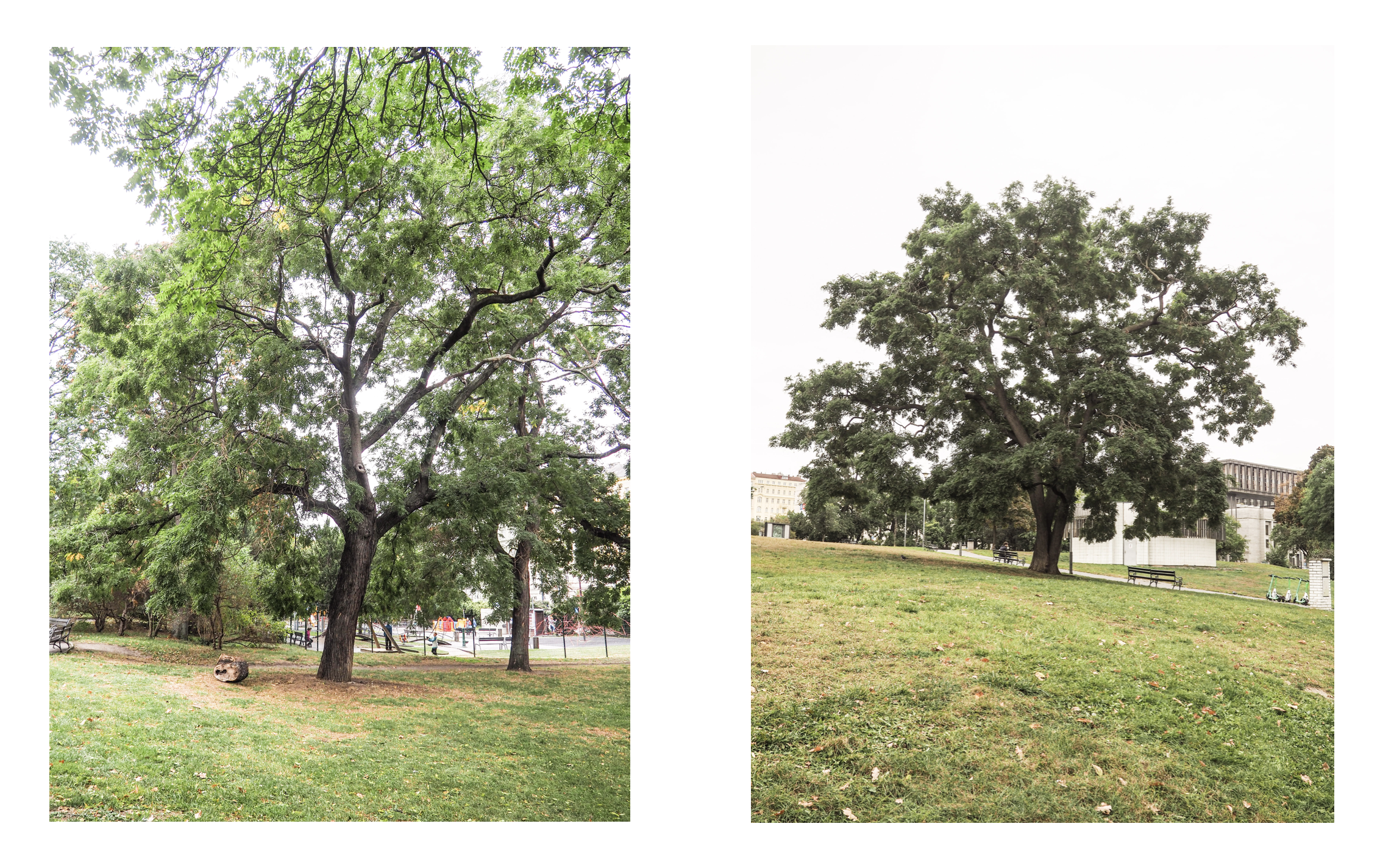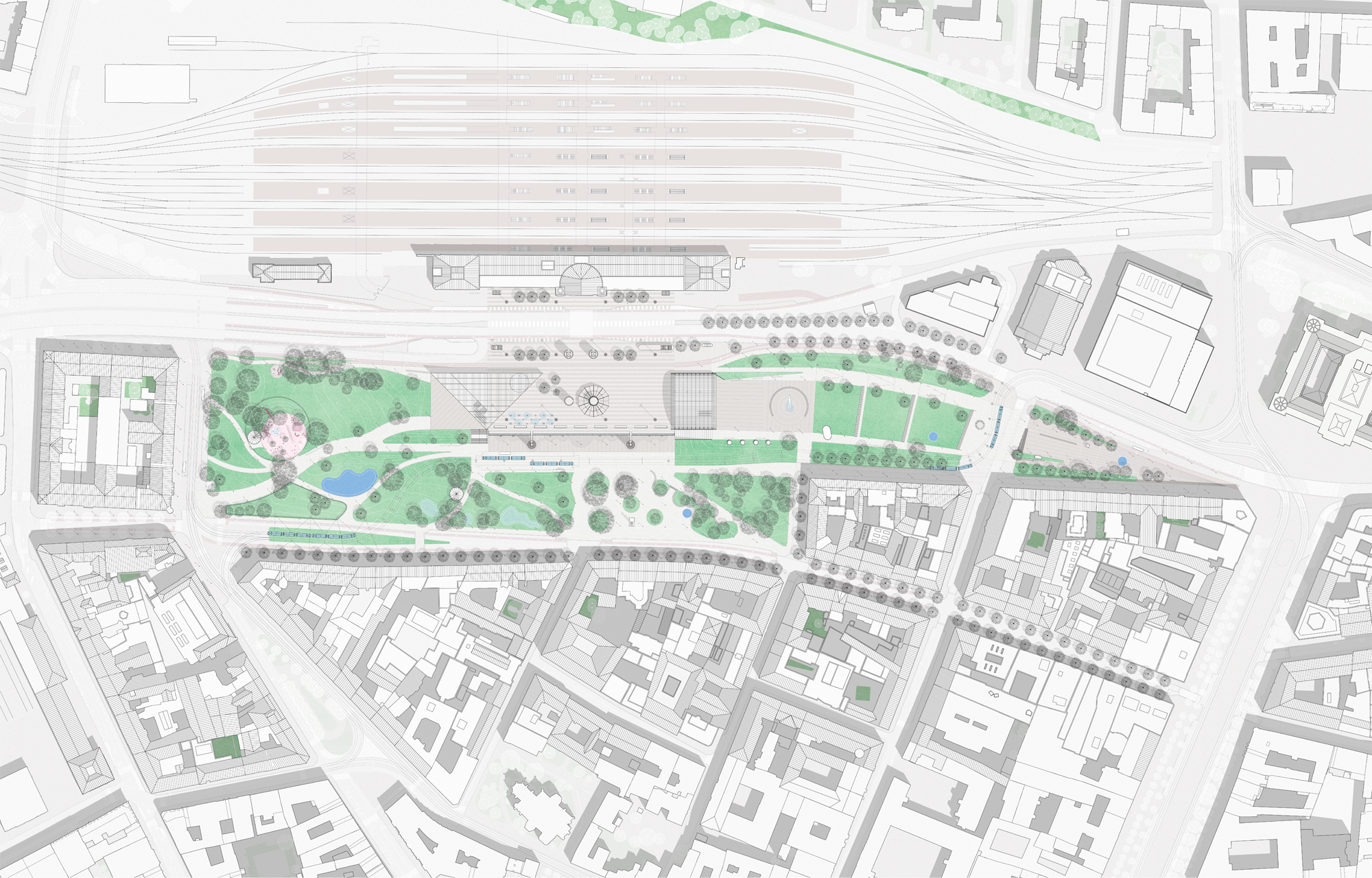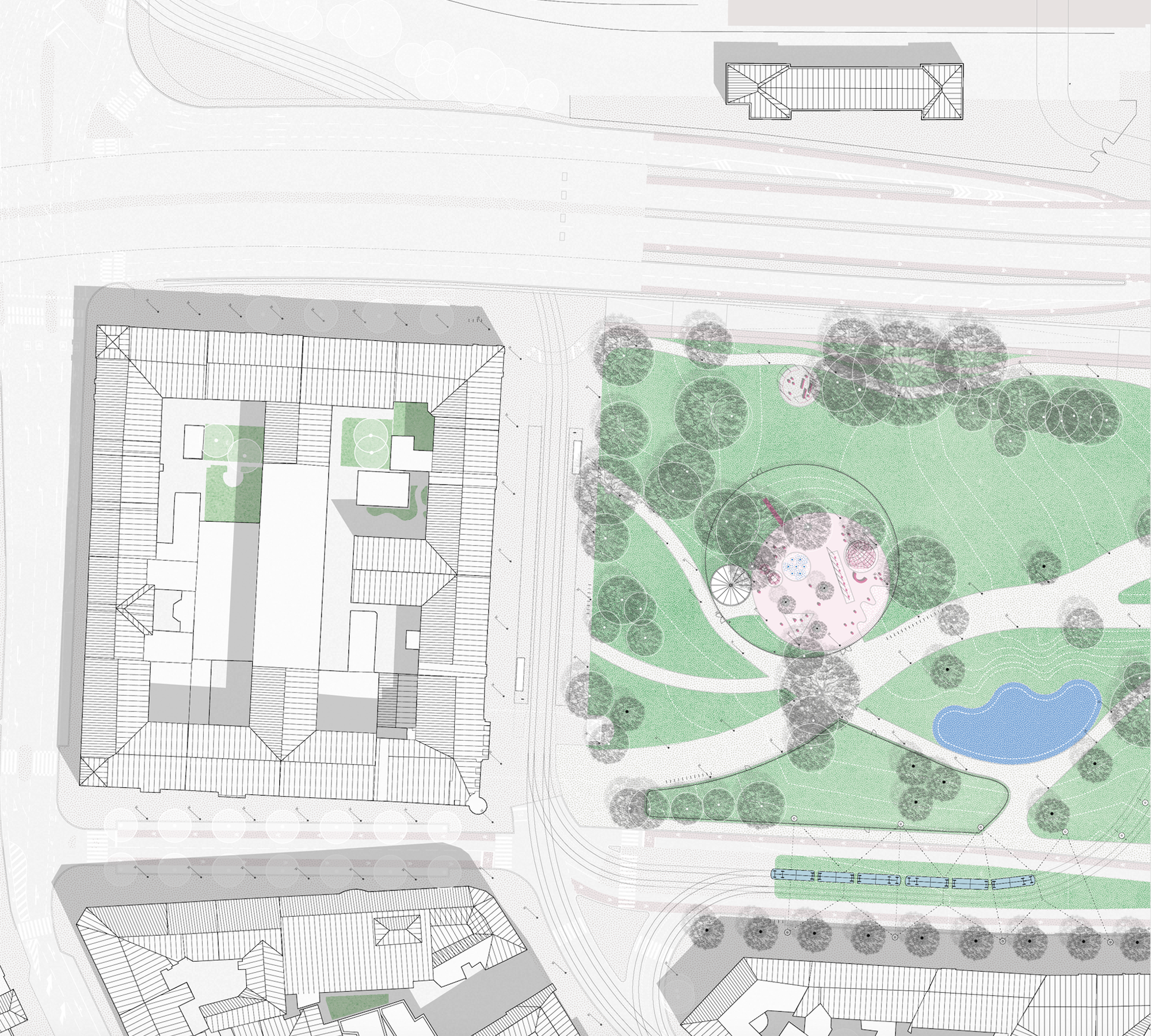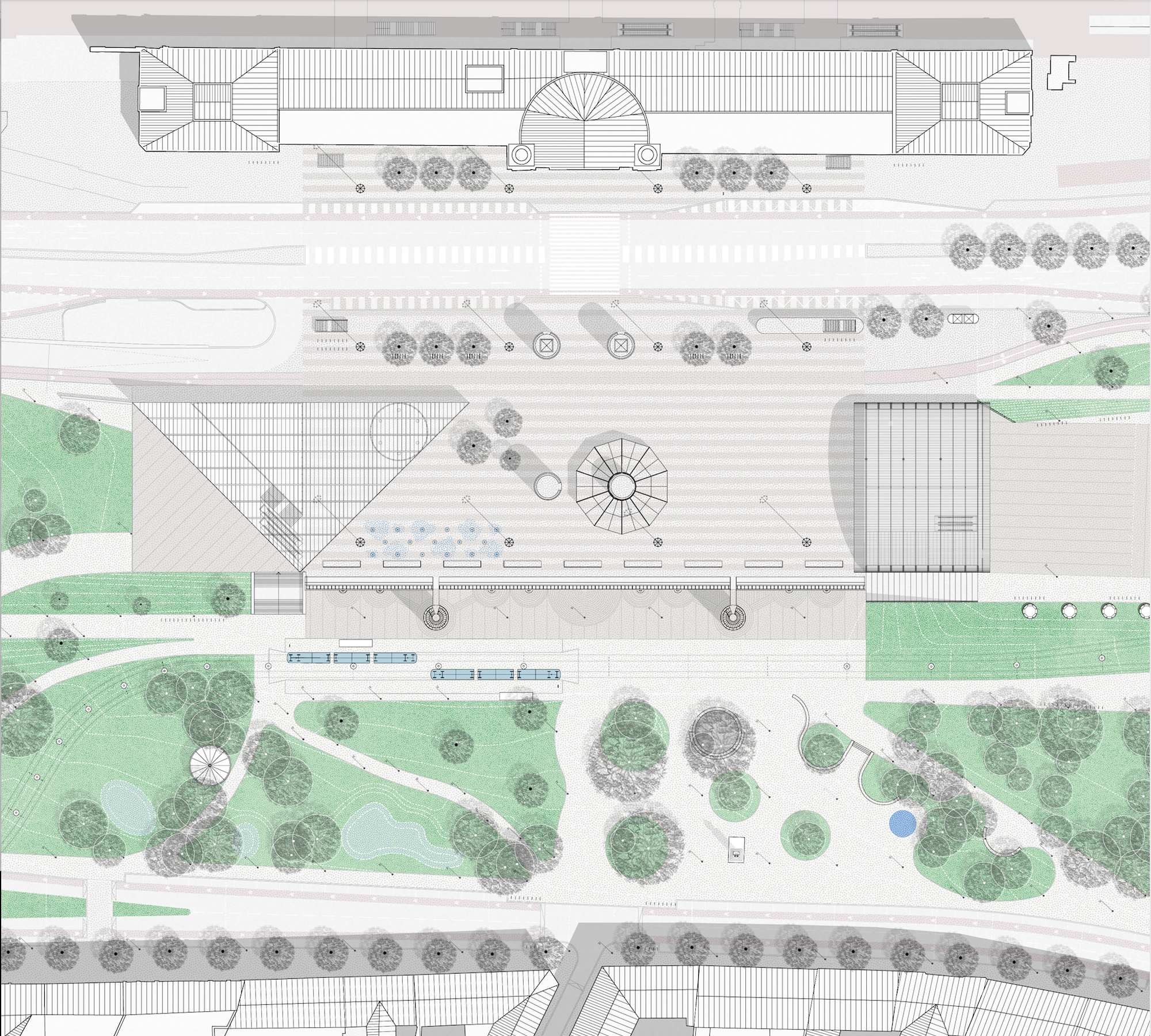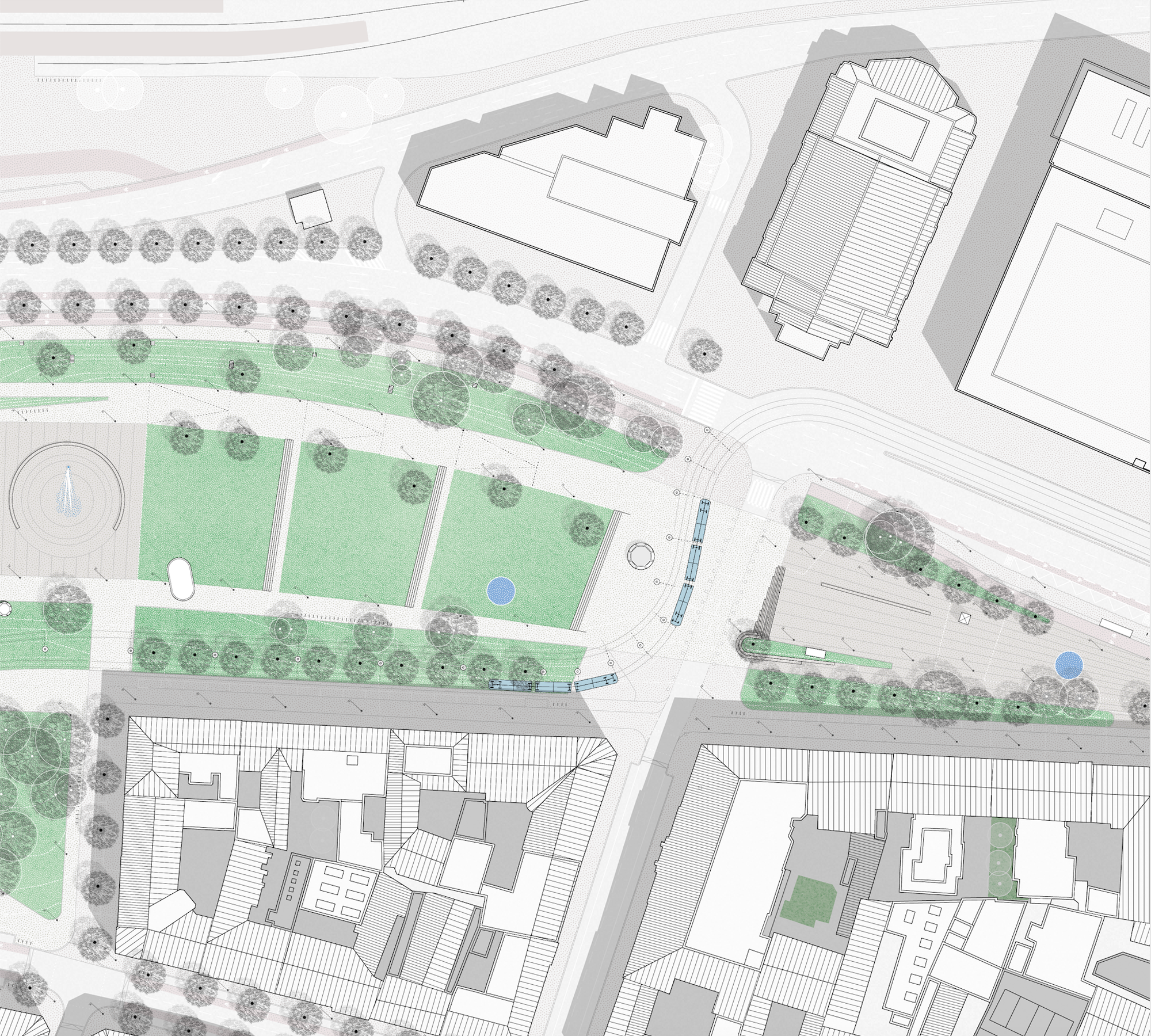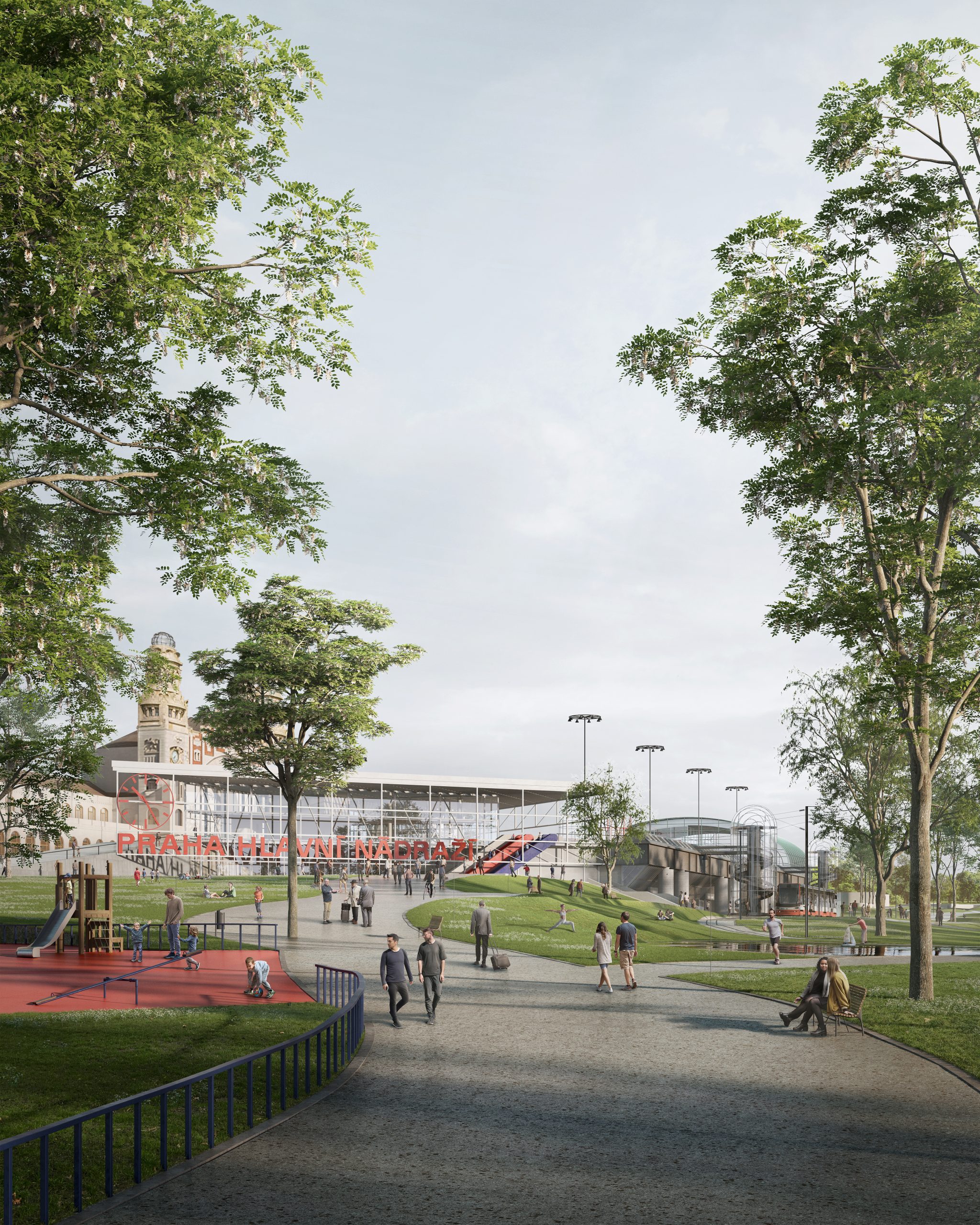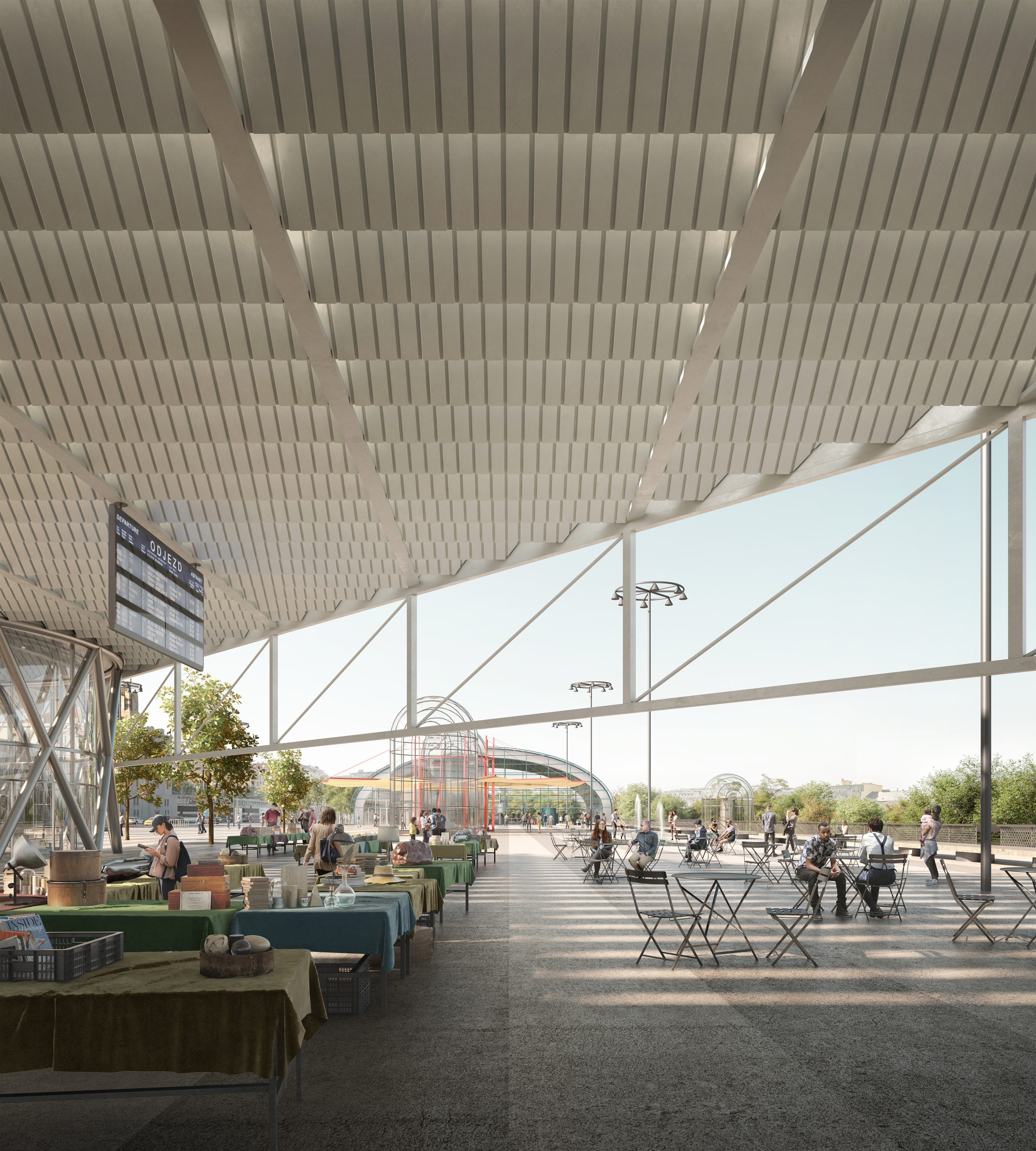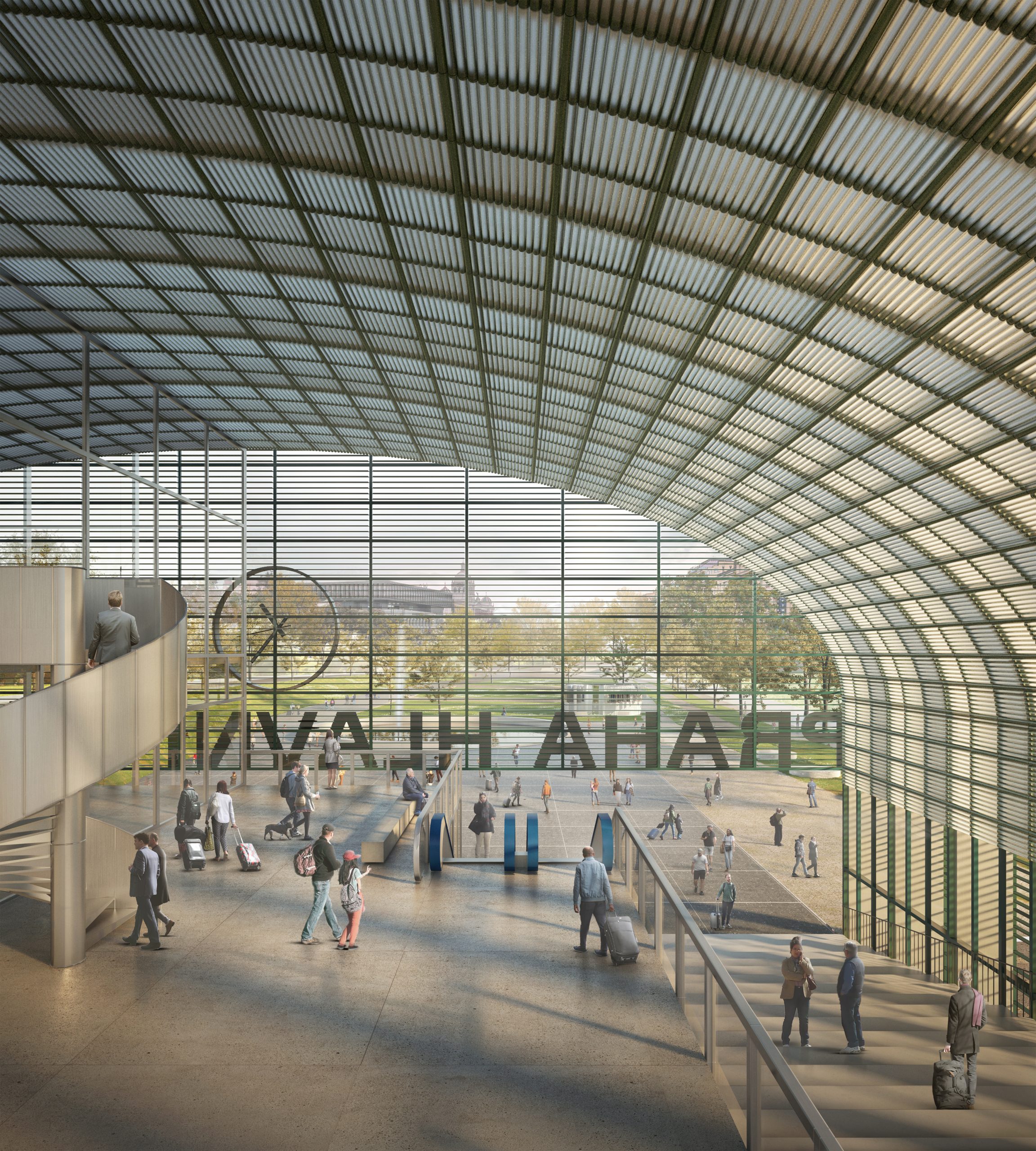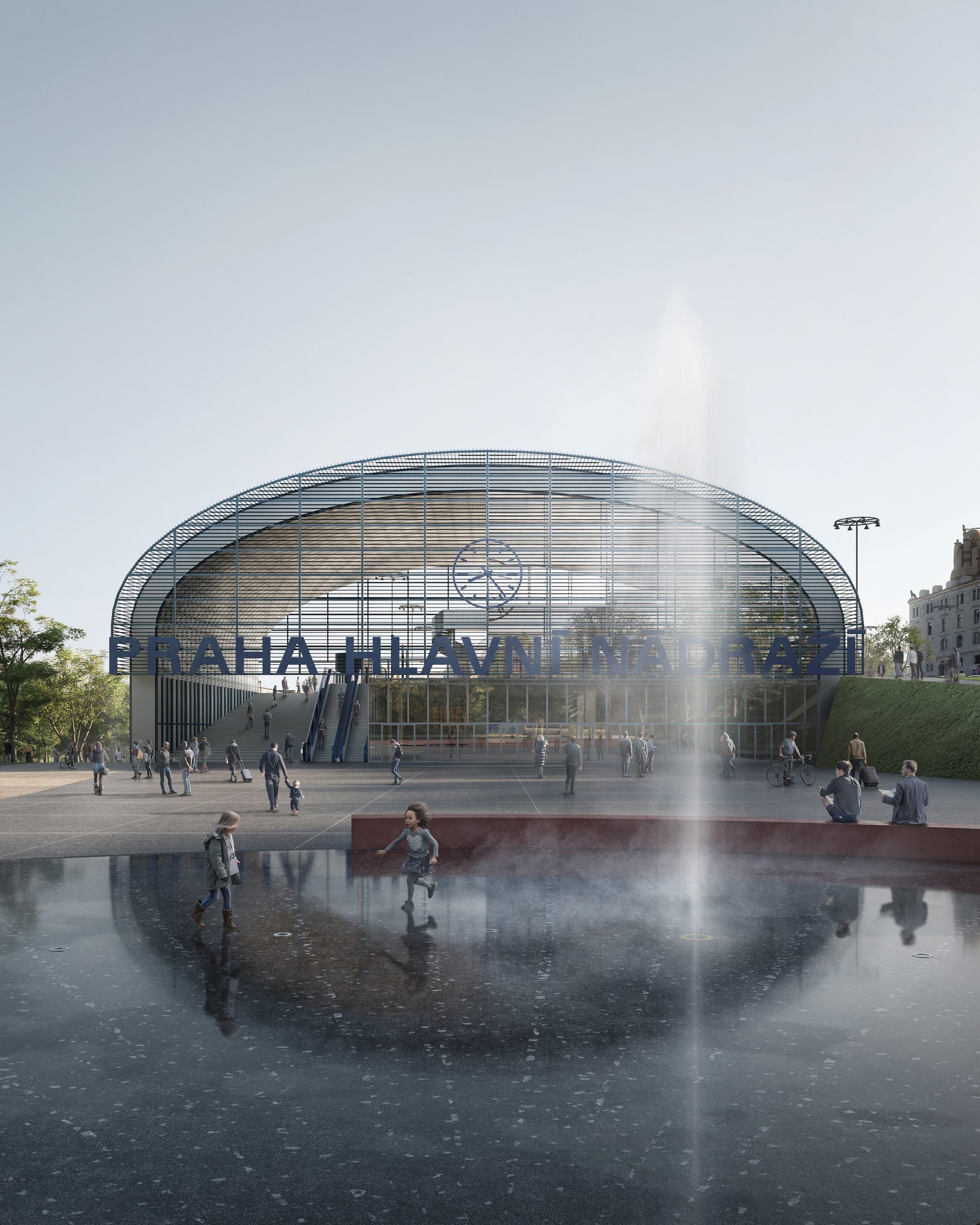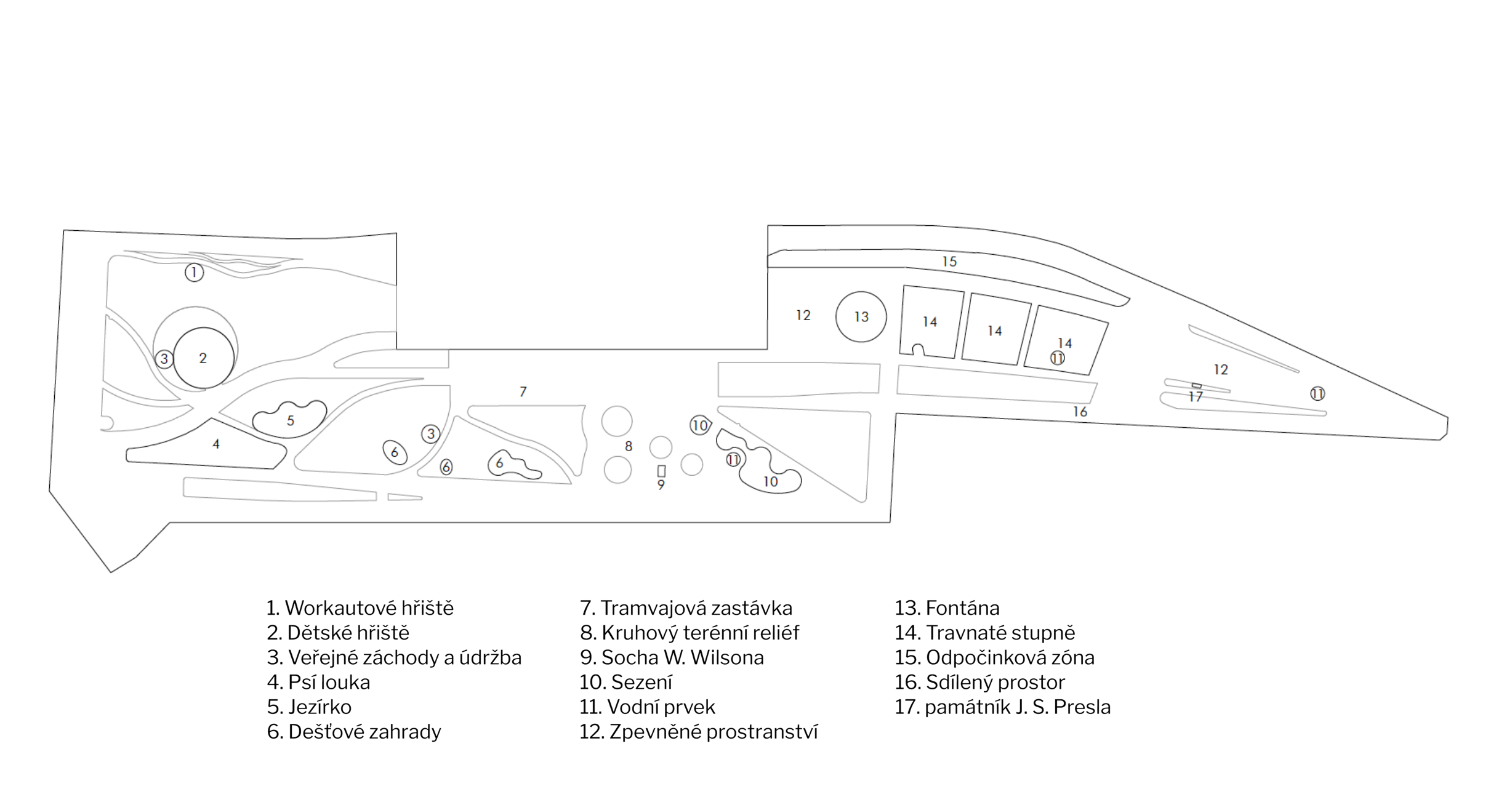status:
International Design Competition
year:
2022-2023
place:
Prague, Czech Republic
client:
The City of Prague, the rail infrastructure manager SZ, the Prague public transport authority DPP and the Institute of Planning and Development (IPR)
with:
re:architekti, baukuh
area:
98.446 m²
description:
The project for the extension of The Prague Central Station and the reconfiguration of the park in front of it immediately sought to answer the two main issues emerged from the analysis of the project area: the invisibility of the existing station, which is completely separated from the city, and at the same time the difficulty of rethinking the ‘Vrchlického sady’ park which lies at the intersection of a complex set of constraints including the unchangeable underground infrastructure, the tracks of the new tram line, the positions of trees and monuments, the traces of Thomayer’s park, and the ideas, partially realized, proposed in 1973 by Otakar Kuça.
This series of often contradictory conditions determined the formation of “lost areas”, places that somehow drifted away and disappeared, becoming isolated and neglected. The project has the ambition to bring back all the “lost areas” into a consistent figure. In order to do this, we believe it is important to re-start from the beginning, from the landscaping ideas of František Thomayer. His Romantic idea of a green oasis inside of an urban context is still present in the current atmosphere of the park and especially in the tree planting scheme, in the selection of local and international species, as well as the smoothness of the porous surfaces, their topography, and the presence of water features. We believe that it is possible to adapt Thomayer’s concept to contemporary needs and climatic conditions, and to take it as the underlying logic of a new, tolerant park, capable of adapting to existing constraints, increasing the amount of permeable surfaces, accepting new functions, and of imagining a possible co-existence of all its different components.
Precise and subtle graftings of new vegetal species and gentle landforms renew the Romantic park, augmenting the permeability of the site and making easier to move in it and to access its new program. Given its multi-scalar nature, the park re-establishes links and re-opens lost urban panoramas, bringing together citizens and visitors in a complex, multi-layered environment.
images, from top to bottom:
1. View of the “New Terminal” from the park from Opletalova street
2. Plan, 1:2000
3. Photos of existing preserved trees
4. Plan, 1:1000
5. Zoom of the plan
6. Zoom of the plan
7. Zoom of the plan
8. View of the new north hall from the park
9. View of the terrace from under the triangular roof of the northern extension towards the south
10. View from the south hall towards the National Museum
11. View of the facade of the new south hall from the square
12. View of the new north hall from the park
13. Botanical selection
14. Program of the park
realistic visualization:
Filippo Bolognese Images
